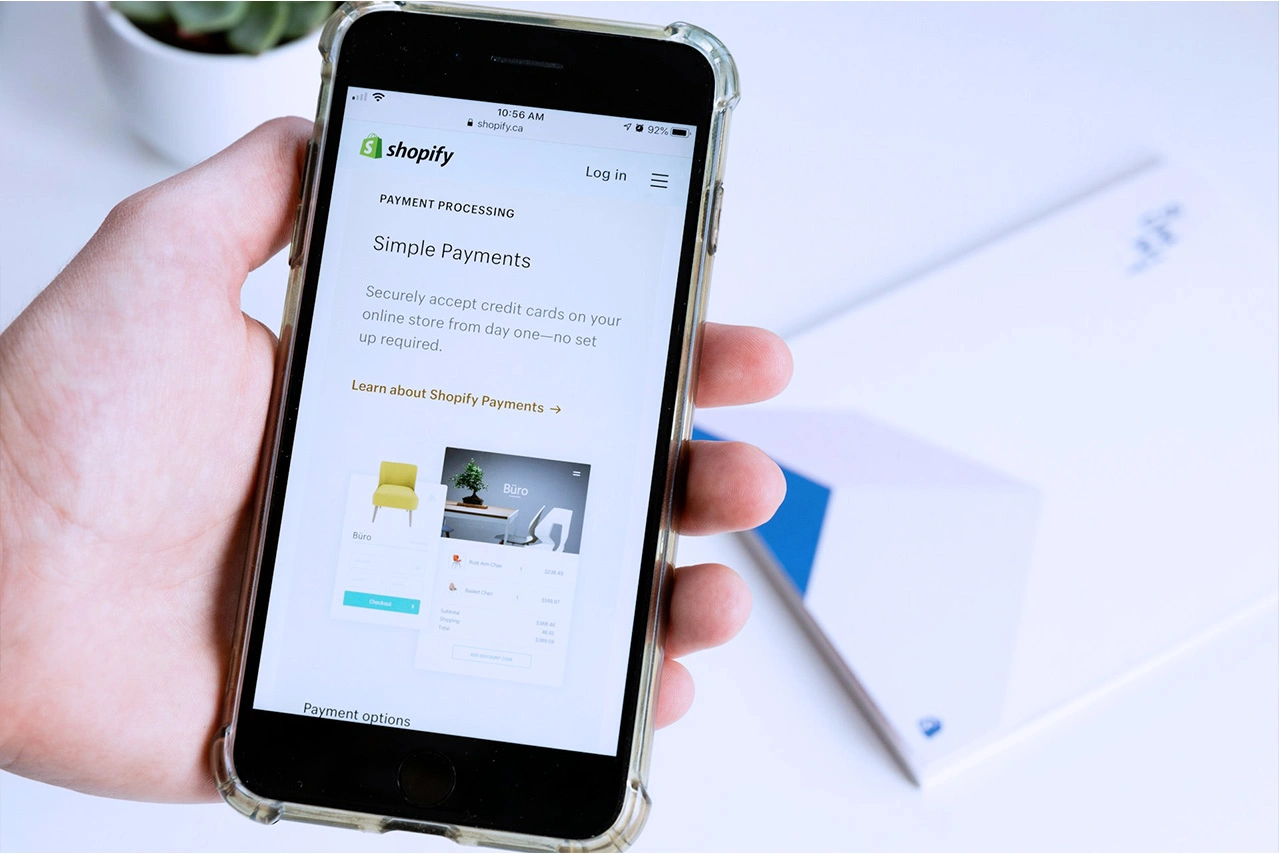E-commerce consists of buying and selling goods and services over the internet. It ranges from an online store selling physical products to platforms offering digital content or services.
Thanks to digitization and the tools available today, launching an e-commerce business is accessible to everyone—from solo entrepreneurs to agencies, SMEs, and large companies.
Key characteristics of e-commerce:
- 24/7 availability. Online stores can sell around the clock, expanding reach and sales opportunities.
- Geographic reach. It enables you to reach customers in other countries or regions at a fraction of the cost of a physical store.
- Automation. Payments, invoicing, and inventory management can be automated with an e-commerce CMS.
- Data and measurement. User behavior can be tracked and sales optimized using various data-analytics tools.
- Flexibility. You can choose from different business models: selling physical products, subscription services, or digital products—each requiring different strategies.
- Niche markets. E-commerce makes it possible to serve niche markets that large companies often ignore because dedicating resources to them isn’t profitable.
E-commerce: what it is and how it works
Answering “what is e-commerce” may seem obvious—the sector has grown significantly worldwide since the pandemic and most of us are familiar with it to some degree.
In fact, projections estimate a 22% volume growth in the major Latin American markets during the 2023–2026 period (Payments and Commerce Market Intelligence).
Still, some key aspects of this industry may be less obvious and deserve special mention.
At a general level, yes: e-commerce includes all online commercial activities that involve a monetary exchange for goods and services. That covers sales of physical products as well as courses, content, and other intangibles.
At the same time, the IT infrastructure supporting e-commerce consolidates core business functions under a single roof (or at least aims to): CRM, finance, marketing, operations, logistics, and more.
Moreover, e-commerce has the particular ability to democratize the effects of globalization: not only large corporations can operate in international markets, but also SMEs, entrepreneurs, and freelancers.
And that’s where Wallbit comes in.
Payments App for e-commerce: how do I collect my sales?
Financial management is one of the trickiest and most sensitive aspects of any business—especially when it grows: you need to keep cash flow agile and reliable, and have payment methods that are fast and cost-effective.

With the U.S. account we offer through Wallbit App, you can receive funds, make payments, and purchase in dollars or euros internationally, with no maintenance fees or hidden charges.
You can also request our international Visa Platinum card to pay in dollars for your Google Ads and Meta Ads campaigns, and to cover any other business payments you may need.
If you want to start an e-commerce business today, you can set up an online store on Shopify and use the Wallbit App to receive your earnings without delays, backed by the security of a U.S. bank account in your name.
Try it now for free!
Types of e-commerce by business model
So, what does e-commerce look like in practice? There are different types: B2C, B2B, C2C, C2B, and more. However, these classifications aren’t exclusive to e-commerce—they apply to commerce in general.

It’s more useful to focus on models that are typical of e-commerce:
- Online store (direct-to-consumer). A space to sell from your own site where you control the entire business: brand, pricing, and user experience. This is ideal if you want to build a long-term brand, have budget for marketing and operations, and want to control the customer experience.
- Marketplace. A third-party platform (Amazon, Mercado Libre, Tienda Nube) that provides all the IT infrastructure you need to operate quickly. It’s ideal if you need fast sales, product validation, or have a limited customer-acquisition budget.
- Dropshipping. A model in which you sell without holding inventory. You handle the commercial side while a third party manages inventory movement and shipping to the customer. It’s ideal for validating ideas without inventory or for operating with low capital while outsourcing logistics.
- Intangible products. This includes courses, training, ebooks, software, licenses, and services. This model can scale well because delivery is instant and there are no logistics costs, so profit margins tend to be higher.
- Hybrid and subscription models. These combine physical products, digital goods, and services with recurring access through fixed payments. They can be easily scalable but are often not very profitable and tend to deliver marginal gains.
First steps to start an online business
Mind over matter. The first step is to have an idea that appeals to you or that provides tangible value; it can be a business you care about or an emerging market with big branding opportunities. Always research what entering a given market entails.
Regardless of the idea, you should ask whether it’s viable:
- What value can I offer compared to what already exists?
- Who is my target audience?
- What does the competition look like?
- How much time and money will I need to invest?
Market research
Market research is the process of learning about the needs, habits, and preferences of potential customers. Through surveys and data analysis, you can understand how products or services are perceived and identify opportunities for improvement or innovation.
When done correctly, it provides key insights about competitors and sector trends. That allows you to design more effective campaigns, improve customer satisfaction, and maintain a sustainable competitive advantage over time.
One advantage of e-commerce is that there are market niches large companies tend to overlook because they’re not profitable for them; these niches can be exploited without investing excessive resources in research. Here, you can check the most profitable market niches for 2025.
Choosing a product or service
Defining a product line means specifying the set of items a company offers under the same category or common purpose. These products usually share a theme, customer type, or specific function, which helps build a clear and coherent identity in the market.
If you invest time in market research, choosing high-demand items shouldn’t be too difficult. But your value proposition must stand out from competitors, whether through innovation, price, or sustainability.
- If your goal is to sell intangible products, think about the creation process, copyright, delivery formats (PDF, video, platform access), and post-sale support.
- For physical products, define suppliers, shipping costs, and returns. If you opt for dropshipping, evaluate supplier lead times and product quality.
Platforms and technology: what is an e-commerce CMS?
Choosing an e-commerce platform is critical to your business’s success. A Content Management System (CMS) lets you create and manage websites or apps without programming knowledge.
CMSs often include extensions or plugins that expand functionality—including the ability to connect payment methods, provide customer support, and manage orders.
When you look for an e-commerce CMS, you’re really looking for a system that makes it easy to manage your catalog, orders, and content.
You can choose different options depending on how much control you want over your store.
Self-hosted e-commerce CMS
Offers greater control and flexibility but requires technical knowledge and maintenance. Ideal if you need customization and scalability.
SaaS (hosted platform)
Requires less maintenance (hosting, updates) and can be deployed faster, but has limits on customization and involves monthly costs.
Marketplace (Shopify, Tienda Nube, etc.)
The ideal choice to launch immediately. It gives you access to an existing market, but limits branding and exerts control over pricing and fees. If you decide to use Wallbit to collect payments, you can build your store on Shopify and withdraw directly to our app.
Payments, logistics, and customer support
Payment gateways
Payment gateways are the systems that process transactions between businesses and customers. Choose a gateway that is secure and fast to build customer trust and increase conversion rates.
It’s recommended to integrate options that accept local and international credit and debit cards, bank transfers, and popular digital wallets.
In Latin America, offering local payment methods—such as Mercado Pago, PIX, or PSE—can make a big difference in sales, since consumers often prefer well-known options with support in their currency.
Also, choosing a gateway with a strong reputation and security certifications (like PCI DSS) helps protect buyer data and strengthens your store’s credibility.
Logistics and shipping
A well-defined logistics strategy directly impacts customer satisfaction. It’s important to set clear shipping, delivery, and return policies before you sell your first product.
If you sell physical products, negotiate rates with logistics providers or consider using fulfillment services that handle warehousing and distribution—this is the best option for getting started.
Customer service
Eighty percent of customers believe (and they are right) that customer support is a key factor in trusting a brand and returning to buy again.
Having support channels like live chat, email, and an FAQ section makes it easier to resolve questions and prevents friction during the purchase process.
Responding quickly and personally improves user experience and reduces the likelihood of returns or complaints.
Efficient support not only solves problems: it also encourages positive reviews and referrals, boosting reputation and organic growth. If you use Shopify, you can use Shopify Flow to integrate this with your online store.
Conclusion
Ultimately, starting a successful e-commerce business is accessible and relatively straightforward. We recommend starting on a marketplace like Shopify because it lets you get up and running quickly and withdraw your earnings to your Wallbit account in a fast, secure, and cost-effective way. Open a free account today!



